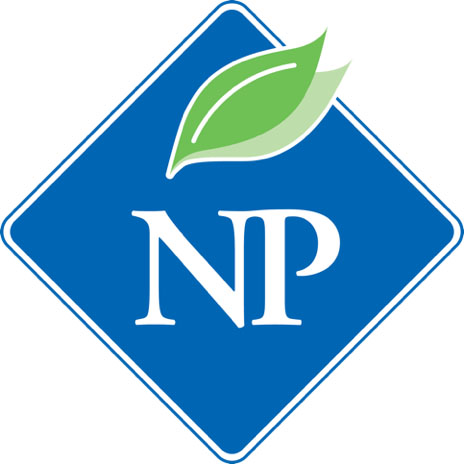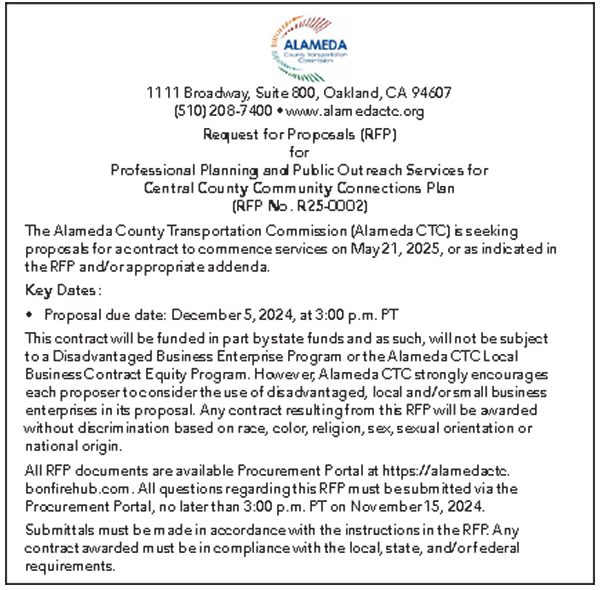COVID-19
Teachers and Union Ask: Does OUSD Have a Tech Plan to Open Schools?
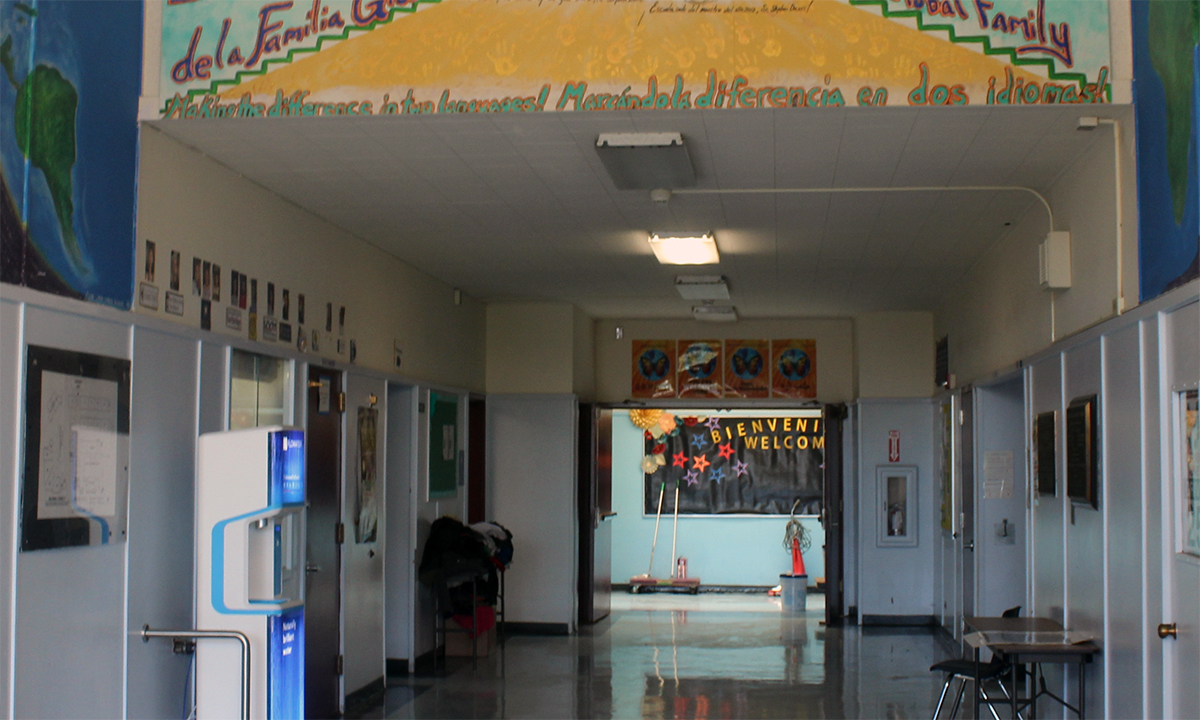
Some Oakland public school teachers and their union, the Oakland Education Association (OEA), are expressing concern that the Oakland Unified School District (OUSD) might not provide adequate technology, technological support, and preparatory time to understand distance learning technology before the school year starts.
“We need time to prepare and we need students to have access to the technology they need,” said OEA’s secretary and special education teacher Bethany Meyer.
OUSD has announced that teachers are scheduled to have three days of professional development from August 5-7, then instruction will start on August 10. The three-day professional development session is the same amount of time Oakland teachers have recently been allotted to prepare for a typical school year. But circumstances have radically changed for the 2020-21 school year.
A recent announcement from Alameda County Supt. of Schools L. Karen Monroe indicates that OUSD could rely entirely on distance learning far longer than initially planned.
“Until Alameda County is off the State Monitoring List for 14 consecutive days, all Alameda County schools may only provide distance learning to their students,” read the statement, which came out on July 24.
A recent surge in COVID-19 cases put Alameda County on the list. OEA released a video on Monday demanding that the district make a return plan specific to Oakland, which has a COVID-19 case rate more than seven times higher than the rest of the county.
One East Oakland zip code, 94603, has a case rate over 14 times higher than the rest of the county. With the risk of COVID-19 spreading so high in Oakland, many teachers anticipate distance learning becoming necessary for the foreseeable future.
“We’re trying to negotiate safe, equitable, well-resourced schools so that when we do return it’s actually safe for kids. We don’t think distance learning is the best way to learn and I’ve never heard any teacher say they like it better than in-person teaching,” said Meyer. “But we have to do what’s safe.”
OEA is asking for a two-week professional development period to adequately prepare for the new technology and increased state guidelines for the instructional minutes required for distance learning.
“Increasing the instructional minutes will be a dramatic improvement for kids. We agree with the district on that,” said Meyer. “But we don’t agree you can just jump into that on the first day without time to plan for it.”
Teachers also want to be sure that students and parents have the technology and technological support from the district to access distance learning. OEA did a study at three schools in East Oakland and three schools in West Oakland that found over 30% of students were not able to consistently access distance learning. When distance learning started last spring, teachers also were put in the role of helping families with the technology, a service they were never trained to provide. They want more aid from the district this year.
“[Providing tech support] can’t fall on teachers because we can’t do it while we’re teaching,” said kindergarten Teacher Sara Shepich.
The Oakland Undivided campaign, which is largely run by two non-profit businesses Tech Exchange and The Oakland Education Fund, has $12.5 million, $10 million of which was donated by Twitter founder Jack Dorsey, in funds for technology and technological support but Shepich questions if they have a good plan and the information they need to adequately support OUSD.
“All these outside organizations are involved but they can’t tell us the details of their plan,” said Shepich.
OUSD released a press release on July 22 saying that Oakland Undivided would distribute 25,000 computers in the first two months of school to Oakland students, provide internet hotspots for those who need them, as well as support with the technology. But no firm dates have been announced for when the computers will arrive or when hotspots will be set up. OUSD is asking parents to complete a Tech Check survey they plan to e-mail on August 3, but Shepich points out that that survey will be most accessible to those who already have the technology.
“Some of my families don’t have smartphones. Their phone is just a phone,” said Shepich, who worries that families won’t be able to access e-mail to fill out the survey.
Shepich asked OUSD and Oakland Undivided to set up a telephone hotline that parents could use to inform them about their technology needs and access help, but there have been no plans announced to provide such a service. She also advocated for translation services in Mam, the only language some of her families speak fluently, but has not seen plans for that.
OUSD’s press release said they would provide on paper and in-person ways to fill out the survey, but they did not respond to direct questions about when and where those methods of filling out the survey would be available. The district also did not respond to a direct question asking why they are waiting until August 3 to send out the survey, a week before the first day of school.
Oakland Undivided dollars are set to cover not only OUSD schools but charter schools as well, even though at least 15 charter schools qualified for and already received COVID-19 Paycheck Protection Payment (PPP) funds from the federal government that OUSD schools could not qualify for. The total amount of PPP funds amounted to almost $19 million, according to inthepublicinterest.org.
While OUSD schools need Oakland Undivided funding for computers, hotspots, and training, charter schools like Lighthouse Community, American Indian Middle Schools, and Education for Change could be set to receive some of the funding even though they each have already received millions in emergency COVID funding.
The situation has some parents worried, particularly because they faced difficulties accessing distance learning last spring.
Crystal Beltran, who’s daughter attended kindergarten last year at Global Family Elementary school, said sometimes she faced difficulties accessing distance learning. When that happened she called her daughter’s teacher but she said “there was really nothing much she could do.”
Beltran said she received no help from the district with technology support at that time.
“I think there needs to be more support for the kids,” said Beltran, “because as it is, it’s hard for them to learn online.”
Alameda County
After Years of Working Remotely, Oakland Requires All City Employees to Return to Office by April 7
City Administrator Jestin Johnson recently told city unions that he is ending Oakland’s telecommuting program. The new policy will require employees to come to work at least four days a week. These new regulations go into effect on Feb. 18 for non-union department heads, assistant and deputy directors, managers, and supervisors. All other employees must be back at work by April 7.

By Post Staff
The City Oakland is requiring all employees to return to the office, thereby ending the telecommuting policy established during the pandemic that has left some City Hall departments understaffed.
City Administrator Jestin Johnson recently told city unions that he is ending Oakland’s telecommuting program. The new policy will require employees to come to work at least four days a week.
These new regulations go into effect on Feb. 18 for non-union department heads, assistant and deputy directors, managers, and supervisors. All other employees must be back at work by April 7.
The administration may still grant the right to work remotely on a case-by-case basis.
In his memo to city unions, Johnson said former President Joe Biden had declared an end to the pandemic in September 2022, and that since then, “We have collectively moved into newer, safer health conditions.”
Johnson said “multiple departments” already have all their staff back in the office or workplace.
The City’s COVID-era policy, enacted in September 2021, was designed to reduce the spread of the debilitating and potentially fatal virus.
Many cities and companies across the country are now ending their pandemic-related remote work policies. Locally, mayoral candidate Loren Taylor in a press conference made the policy a central issue in his campaign for mayor.
City Hall reopened for in-person meetings two years ago, and the city’s decision to end remote work occurred before Taylor’s press conference.
At an endorsement meeting last Saturday of the John George Democratic Club, mayoral candidate Barbara Lee said she agreed that city workers should return to the job.
At the same time, she said, the city should allow employees time to readjust their lives, which were disrupted by the pandemic, and should recognize individual needs, taking care to maintain staff morale.
The John George club endorsed Lee for Mayor and Charlene Wang for City Council representative for District 2. The club also voted to take no position on the sales tax measure that will be on the April 15 ballot.
Bay Area
Authorities Warn: There’s a COVID Surge in California
According to data estimates by the Centers for Disease Control and Prevention (CDC), the coronavirus in California’s wastewater has spiked for eight consecutive weeks. Hospitalizations and emergency room visits have also increased since the rise of the new subvariants. Over the last month, Los Angeles County experienced an average of 389 hospital patients per day that tested positive for the coronavirus. The FLiRT subvariants such as KP.3.1.1. Made up over 2% of coronavirus samples nationwide, an increase of more than 7% last month.
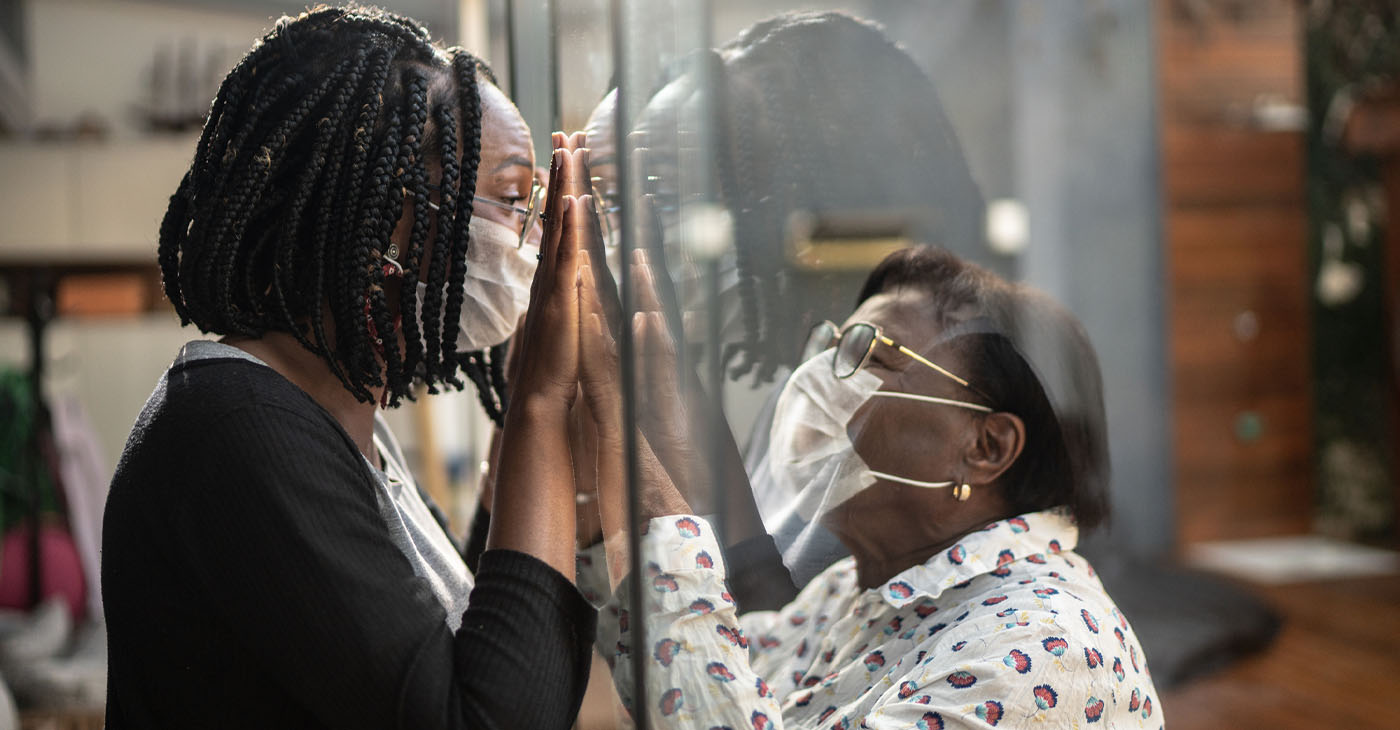
By Bo Tefu, California Black Media
California is experiencing a COVID-19 surge this summer, experts warn, as numbers of infections increased for the third month this year.
State public health authorities attribute the summer COVID surge to more infectious subvariants that have emerged as the coronavirus evolves.
Dr. Elizabeth Hudson, regional chief of infectious disease at Kaiser Permanente Southern California, stated that subvariants of COVID-19 called FLiRT increased in recent months, particularly one named KP.3.1.1 that has become the most common strain in the country.
Dr. Peter Chin-Hong, an infectious diseases expert at UC San Francisco, said that the subvariant KP.3.1.1 seems most adept at transmission.
“The subvariant is the one that people think will continue to take over, not only in the United States, but … around the world,” Chin-Hong said.
According to data estimates by the Centers for Disease Control and Prevention (CDC), the coronavirus in California’s wastewater has spiked for eight consecutive weeks. Hospitalizations and emergency room visits have also increased since the rise of the new subvariants. Over the last month, Los Angeles County experienced an average of 389 hospital patients per day that tested positive for the coronavirus. The FLiRT subvariants such as KP.3.1.1. Made up over 2% of coronavirus samples nationwide, an increase of more than 7% last month.
The majority of the people who tested positive for COVID-19 complained of a sore throat and a heavy cough. Risk factors that can increase the illness include age, underlying health issues, and vaccine dosage.
Health experts stated that the demand for the COVID-19 vaccine has increased in Northern California. However, people are having a hard time getting the vaccine due to the increasing number of cases.
Alameda County
Alameda County Supervisor Nate Miley Gives Small Business a $30,000 Boost
On Jan. 6, Alameda County Supervisor Nate Miley (D6) presented a $30,000 check to small business owner William “Bill” Owens, owner of Cascos Martial Arts Studio at 74th and MacArthur in Oakland. Miley, whose business has been facing financial challenges due to COVID Pandemic restrictions, says he was nearing bankruptcy. “This check will go a long way and is greatly appreciated,” he said.
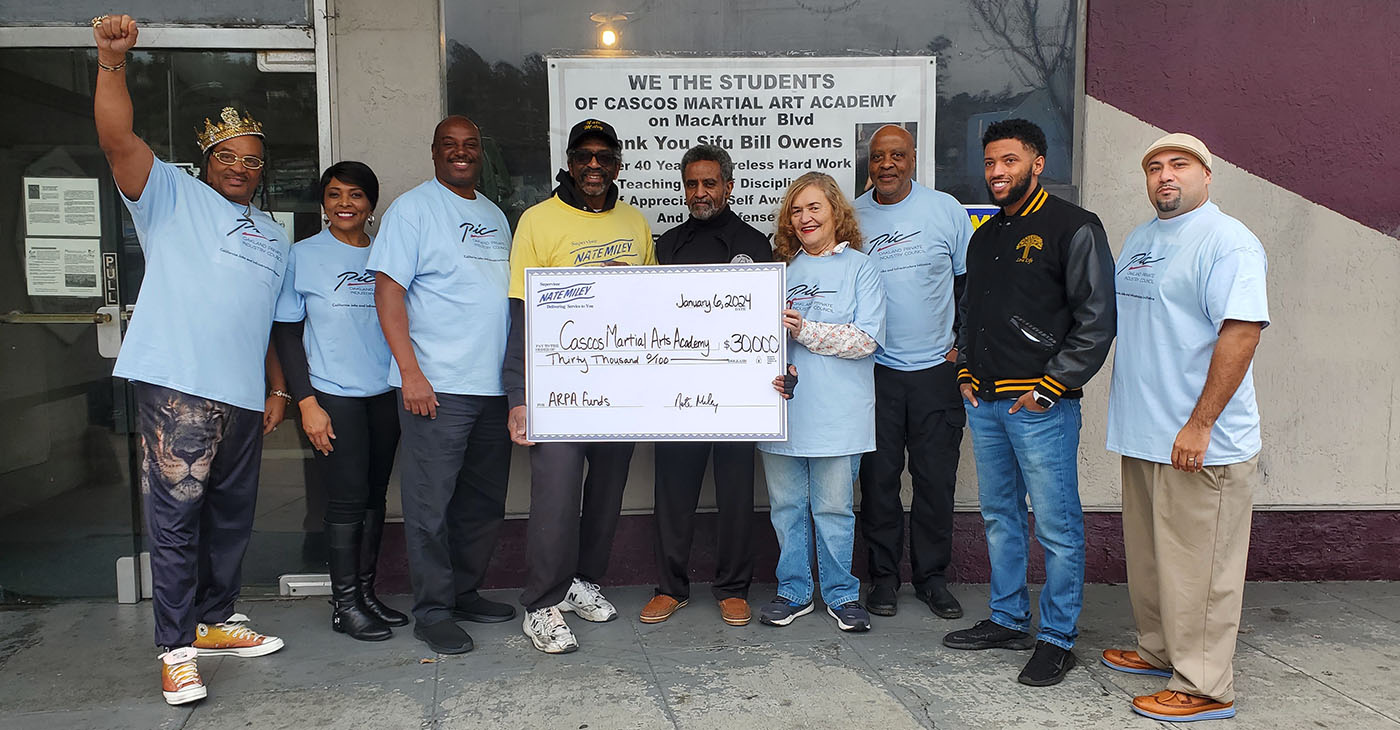
By Carla Thomas
On Jan. 6, Alameda County Supervisor Nate Miley (D6) presented a $30,000 check to small business owner William “Bill” Owens, owner of Cascos Martial Arts Studio at 74th and MacArthur in Oakland.
Miley, whose business has been facing financial challenges due to COVID Pandemic restrictions, says he was nearing bankruptcy. “This check will go a long way and is greatly appreciated,” he said.
For Miley, starting 2024 on a high note was important. “I can’t think of a better way to start the new year,” he said. “Small businesses are vital to our communities and when you help a committed business owner, you help a community. It’s an honor to add value by contributing to a small business that has trained so many young people, watched them grow up and have viable careers.”
OPIC Business Outreach Team Members Diane Lewis and Frank Smith celebrated the new collaboration with the martial arts studio.
“It’s always exciting to launch new programs,” said Lewis. “It’s encouraging to see Black men supporting one another and helping them rise to another level,” said Smith.
The check was presented to Owens along with the Oakland Private Equity Council (OPIC).
Pastor Raymond Lankford of the Oakland Community Church and president of the (OPIC) was also present.
“This is martial arts studio has been a big part of this community and helping support Mr. Owens is a win-win for the community,” said Lankford.
OPIC Board Member Kitty Epstein also praised Owens.
“It’s important to support this business and its contribution to the community,” said Epstein.
Cascos Martial Arts Studio has been in business for more than 50 years. Owens and his wife Mary have taught the community the art of self-defense together. “When COVID happened, we were hit with social distancing regulations in our small space,” explained Owens. “We went from having a couple hundred students to a few.”
After the check presentation, Owens invited attendees to see his training in action. For him, teaching the art of self-defense has included naming his moves and techniques after cultural icons like Martin Luther King, Jr. and other activists.
Owens says he bridged the innate rhythms and movements of African American culture with the techniques of Asian martial arts. However, upon traveling the world, Owens noticed many of the moves were less fluid.
“Often the moves are more frigid, and our influence has added more fluid movements,” said Owens as he moved, mimicking some boxing movements and fancy footwork.
“We want to ensure Owens is in business for years to come,” said Pastor Raymond Lankford, president of the Oakland Private Industry Council.
Owens also demonstrated how women and the elderly can protect themselves from theft, injury, or even being trafficked. 2022 statistics noted that of the 1500 people reported missing, over half were African American.
“We have to teach our young people these techniques. We can all support small businesses and expand services throughout the community,” added Owens who plans to add a mobile service to his business.
-

 Activism2 weeks ago
Activism2 weeks agoWe Fought on Opposite Sides of the Sheng Thao Recall. Here’s Why We’re Uniting Behind Barbara Lee for Oakland Mayor
-

 #NNPA BlackPress2 weeks ago
#NNPA BlackPress2 weeks agoRev. Dr. Jamal Bryant’s Black Church Target Boycott Mobilizes 150,000
-

 Activism3 weeks ago
Activism3 weeks agoSan Francisco Is Investing Millions to Address Food Insecurity. Is Oakland Doing the Same?
-

 #NNPA BlackPress2 weeks ago
#NNPA BlackPress2 weeks agoRecently Approved Budget Plan Favors Wealthy, Slashes Aid to Low-Income Americans
-

 Activism2 weeks ago
Activism2 weeks agoFaith Leaders Back Barbara Lee for Mayor, Criticize Candidate Loren Taylor for Dishonest Campaigning
-

 Activism3 weeks ago
Activism3 weeks agoOakland Post: Week of March 12 – 18, 2025
-

 Activism2 weeks ago
Activism2 weeks agoGroup Takes First Steps to Recall District Attorney Diana Becton
-

 #NNPA BlackPress3 weeks ago
#NNPA BlackPress3 weeks agoPRESS ROOM: The Urban One Podcast Network Announces Los Angeles Wildfires Podcast, ‘Altadena: After the Fire’















